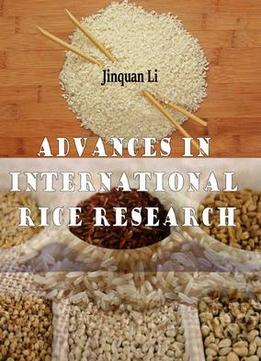
Advances In International Rice Research
by Jinquan Li /
2017 / English / PDF
216.8 MB Download
This book was aimed to show a glance of new advancements in the international rice researches.
Rice provides staple food for more than 50% of the world's population and is an important crop in the world. With the new technologies such as high-throughput genome sequencing and integrated "-omis" methods applied in rice researches, great advancements have been made.
The first section of the book introduced rice cultivation and production. As core sections of the book, the second and third sections introduced physiological and genetic mechanisms on grain quality and biotic and abiotic stress resistance as well as breeding.
In the last section, we introduced new technologies such as chromatin immunoprecipitation, integrated "-omis" methods, and bistatic interferometry technology in rice research.
Preface
1 Soil and Water Management for Sprinkler Irrigated Rice in Southern Brazil
2 Weed Management in Sprinkler-Irrigated Rice: Experiences from Southern Brazil
3 Weed Seedbank in Rice Fields
4 The Use of Rice in Brewing
5 Breeding Rice for Improved Grain Quality
6 Evaluation of Palatability of Cooked Rice
7 Comparison on Grain Quality Between Super Hybrid and Popular Inbred Rice Cultivars Under Two Nitrogen Management Practices
8 The Deep Purple Color and the Scent are Two Great Qualities of the Black Scented Rice (Chakhao) of Manipur
9 Salt Stress Tolerance in Rice: Emerging Role of Exogenous Phytoprotectants
10 Genetics and Genomics of Bacterial Blight Resistance in Rice
11 Upland Rice Breeding in Uganda: Initiatives and Progress
12 Deciphering Histone Modifications in Rice by Chromatin Immunoprecipitation (ChIP): Applications to Study the Impact of Stress Imposition
13 The Application of Genomic Approaches in Studying a Bacterial Blight-Resistant Mutant in Rice
14 Rice Plant Height Monitoring from Space with Bistatic Interferometry











